Lumamlam 2025






Phases of i pilan Lumamlam
Homhom i Pilan
New Moon
September 22
Sinåhi
Waxing Moon
September 30
Pulan Gualåffon
Full Moon
October 7
Kuatton Kresiente
Waning Moon
October 14
Lunar phases sourced from timeanddate.com
Instagram: @guampedia
Facebook: Guampedia
Phone: 671.734.0217
Email: guampedia@gmail.com
Mailing Address: 303 University Drive
UOG Station, House #3
Mangilao GU 96923
is a

Villages of Guam
Community in the Marianas
During the Pulan of Lumåmlam, Guam is celebrating the fiestas of the patron of Yo’ña and Humåtak. Fiestas are a beloved tradition in the Marianas in which each village gathers at the church to celebrate the annual feast day of its patron saint. At present, there are 19 village districts or municipalities in Guam that encompass 25 “villages” and countless ancient dwelling areas. The villages that we know today evolved through our historical eras from our ancestral land tenure systems. Learning about our villages and their historical roots will strengthen our relationships with our island as taotao tåno’ (people of the land), and enrich our sense of pride and protection for the heritage sites that we belong to.
In ancient times, CHamorus/
Yo’ña
Definition : Something he/she posesses
Fiesta Date: October 4
Patron Saint: Saint Francis of Assisi
Definition : Deriving from uma, meaning something on the back or shoulders
Fiesta Date: October 11
Patron Saint: San Dionisio Humåtak
Chamorros organized themselves into familial clans that stewarded swaths of land and natural resources to provide for its clan members. Ancient CHamoru/Chamorro kinship was the foundation of land tenure and use. After the establishment of the Marianas as a Spanish colony in 1668, the Spanish increasingly forced CHamorus/Chamorros to live in “villages” centered around the church for better control of numerous aspects of daily life. The Redduciones displaced all of the CHamorus/Chamorros of the Marianas and forcibly relocated them to Guam and Rota. When the US claimed Guam in 1898, municipalities were created resembling ressetlement patterns from that of the Spanish colonial era.
Although the villages we come from have been influenced by colonization, we still maintain the values of ancient land tenure practices in our modern world. Despite the Spanish efforts at control by centering our lives around the church, the church has become a place in which we come together as a community to celebrate faith with our families in fino’ CHamoru/Chamorro. Regardless of what villages we come from, we are united as taotao Guåhan, the people of Guam. What does your village take pride in? What heritage sites do you come from? How do you care for your village community?
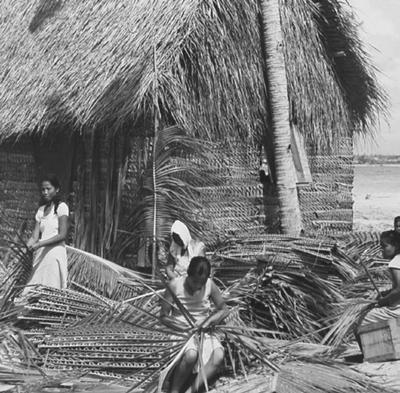
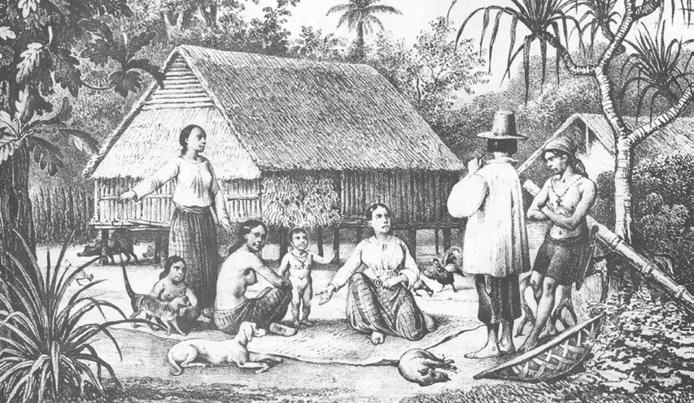
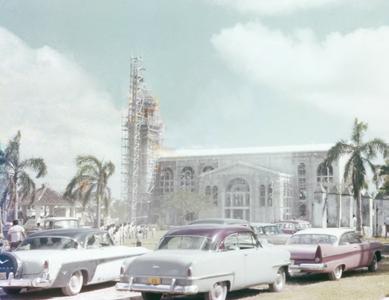
a roof in Hågat in 1945 as part of typical village
Archives/Micronesian Seminar. (3) Reconstruction of the Dulce Nombre de Maria Cathedral-Basilica in Hagåtña. Courtesy of Robert Delf/Guam Museum.
Educator’s Corner
Welcome to the Educator’s Corner! In this recurring feature, we look at different content on Guampedia and think of ways you can adapt them for curriculum in the classroom or for help in assignments. In this month’s issue we look at our collection of newsletters over the last six years. Click here to view our Educators Pathway to explore evem more teaching materials!
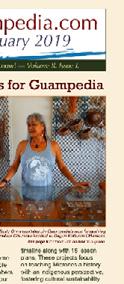

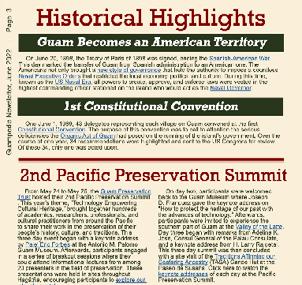
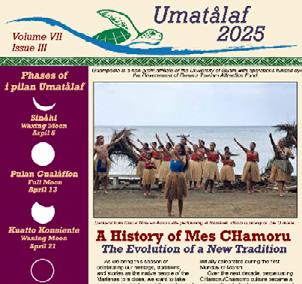
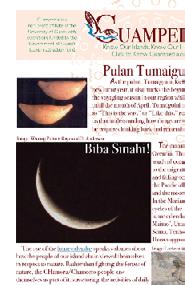
Since 2019, we have worked to produce monthly newsletters to keep visitors informed of Guampedia’s current and future projects as well as projects by our partners from around the world. While our newsletters reflect the bulk of content that already exists on our site, we tailor each issue to select content that provides context to local events as they play out in real time. Each newsletter has been uploaded and organized by month and year on our site for easy reading. This can be helpful for getting ideas when building lessons that center around monthly events. It can also be used to expose students to current events and help build regular-reading habits. Click here to read from our growing archive of newsletters





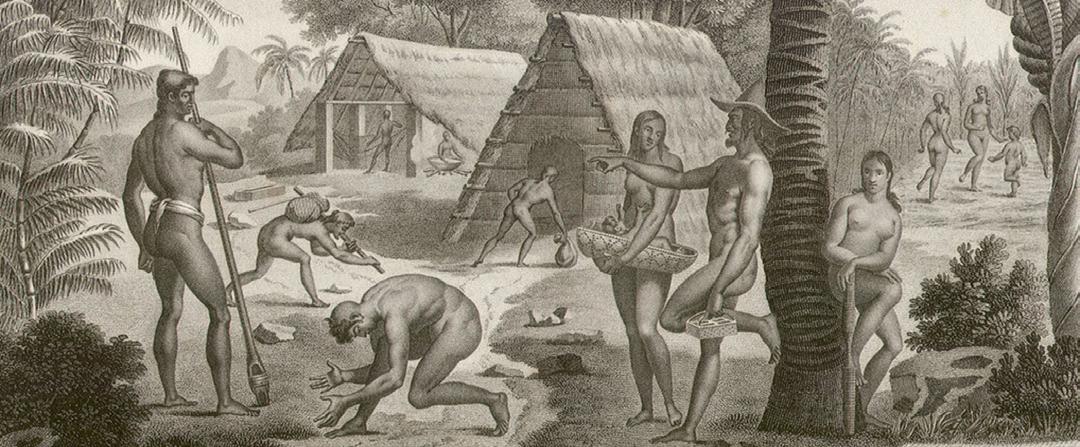
Indigenous Peoples’ Day
Commemorating Our People’s Voices
In school, many of us learn about Columbus arriving in America and the eventual birth of the United States. These histories often exclude the perspectives of indigenous peoples who have lived throughout the Western hemisphere for thousands of years, and still hold living cultures, languages, and worldviews.
In 1977, an idea was proposed to celebrate and honor Indigenous peoples and their histories in place of Columbus Day, at the United Nations International NGO Conference on Discrimination Against Indigenous Populations in the Americas. Since then, many states and cities across the US have chosen to celebrate Indigenous Peoples’ Day either alongside or in place of Columbus Day, on the second Monday in October. These commemorations
bring indigenous histories, and the ongoing efforts of indigenous nations to revitalize their languages and traditional practices, to the forefront. In the Mariana Islands and across the Pacific, our people share similar experiences and challenges when commemorating our experiences and complex hisotry with Western contact.
For many years, the only written sources about the Marianas and CHamoru/Chamorro history were written by outsiders — from early accounts by Spanish missionaries to documents and studies by visiting anthropologists or scholars from the US and abroad. While these sources can offer valuable insights into CHamoru/Chamorro life throughout history, it is important to remember that they were written by outsiders whose perspectives are influenced by
Voices of Our Elders
As the years go by, we gain deeper and fuller appreciation for the stories our mañaina would tell us in our youth. On Guampedia, we’ve worked to record our elders and their stories so that future generations can still have access to the cultural treasure of island wisdom. Click here to remember these stories with us in our section; Voices of Our Elders.


their own cultural backgrounds. In the spirit of Indigenous Peoples Day, Guampedia’s Indigenous Lenses section elevates the voices of our own people. Here, you can find entries authored by indigenous people on topics ranging from Colonialism in the Marianas, Guam’s Political History, CHamoru/Chamorro SelfDetermination, Culture and Identity, and Oral Histories. In the Masters of Tradition section, you can read profiles of cultural practitioners who are recognized for their mastery of traditional art forms, and their contributions towards perpetuating the CHamoru/Chamorro culture. We invite you to delve into these resources to learn more about Guam’s history from the indigenous perspectives that continue to evolve and lead us forward.




